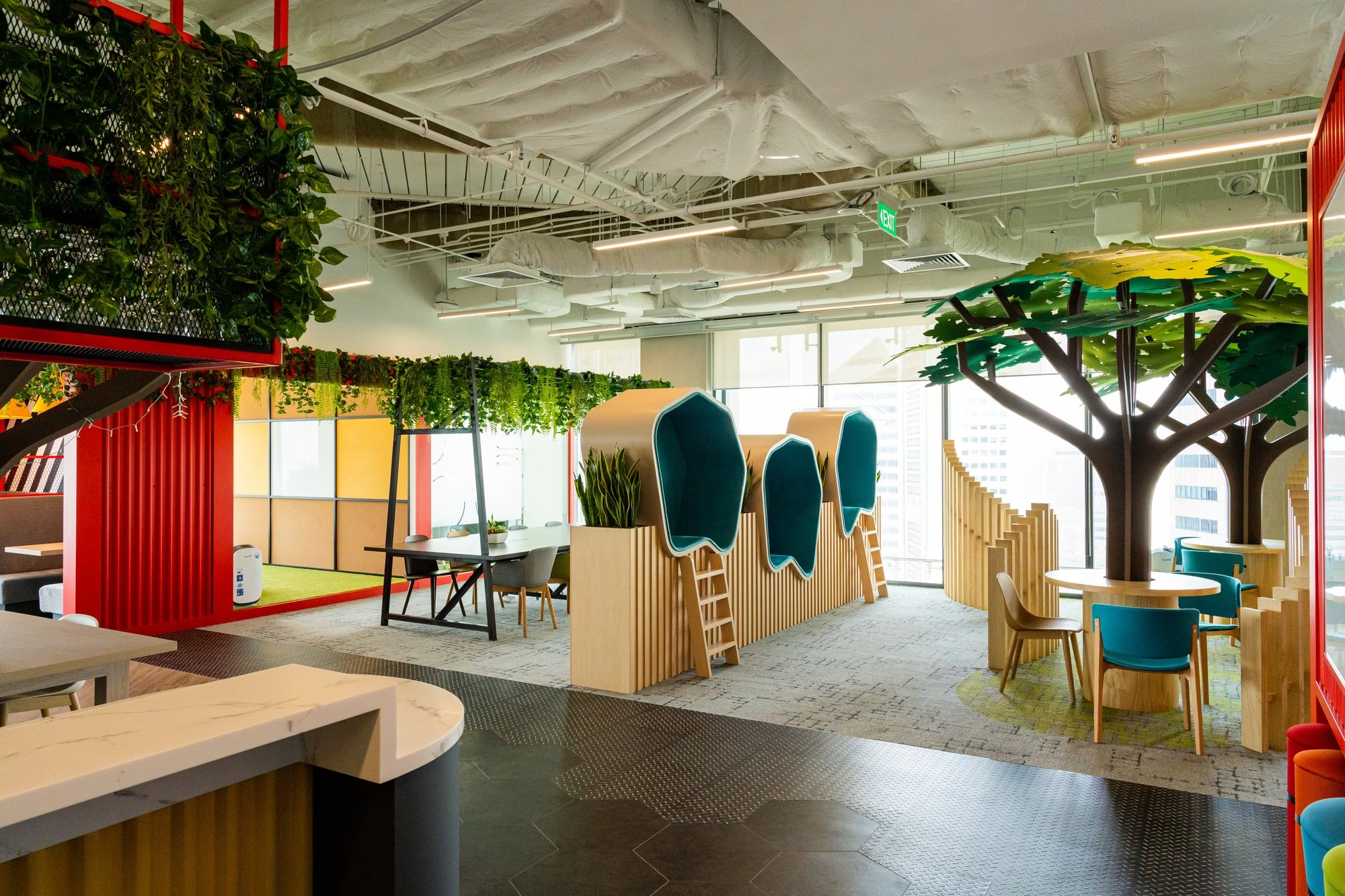Criteo APAC
Criteo APAC (Singapore & Tokyo)
Location
Singapore, Tokyo
Size
20,000 sq. ft.
Services Provided
Global Design, Furniture Consultancy, FF&E

Designing Singapore and Tokyo Offices
The transformations of the Singapore and Tokyo offices of Criteo under the Global Transformation Project highlight a strategic shift towards more adaptable, aesthetically pleasing, and employee-friendly workspaces. Both offices demonstrate an appreciation of diverse work styles, from collaborative teamwork to individual focus tasks.
Every aspect of the design and layout of the offices, from the furniture to the zoning, was carefully considered to ensure an optimal balance of function and form. Employee feedback was taken into account, resulting in a workspace that was not only efficient and effective but also reflective of the unique identity of Criteo’s team.
A noteworthy aspect was of the APAC design project a unique zoning plan. The office was subdivided into areas such as “The Customer Suite,” “The Common,” and “Town Centre.” Each of these zones was designed to fulfil specific functionalities, fostering an environment conducive to both collaborative work and private-focused tasks.

Collaborating with Local Teams Across 6 Countries
As part of the Global Transformation Project, collaboration with local teams in Tokyo and Singapore was a crucial aspect of the process. By working jointly with local teams and the client, were able to create offices that truly met the specific needs of their diverse teams while maintaining a consistent global brand identity.
The general arrangement for both the Singapore and Tokyo office was the creation of diverse areas designed to enhance productivity and foster a collaborative work environment. The office layout incorporated various distinctive zones, including a reception and waiting area, multiple sizes of meeting rooms (large, medium, small, and 1:1 focus spaces), a pantry and social space, workstations, and more specialised spaces such as a Library Retreat and IT Store. The layout was iteratively developed, with changes incorporated based on the client’s feedback, and additional features such as a table tennis area added in response to evolving needs.

Iconography, Tradition and Culture: Enriching the Workspace
Part of the brief was a commitment to infusing local iconography, tradition, and culture into Criteo’s office designs, fostering an inclusive atmosphere that encapsulates local uniqueness and transcends geographical boundaries. More than merely beautifying the workspace, these elements resonate with familiar local landmarks, heritage, and traditions, resulting in a culturally rich environment that enhances the employee experience.
The Singapore office exemplifies cultural iconography in the workplace by skillfully incorporating local culture into its workspace design. A wall echoing the iconic Mamashop represents Singapore’s vibrant shopping spirit. Additionally, office lockers adorned with stylised Singaporean stamps merge a celebration of postal history with everyday utility, enhancing the space’s cultural resonance.

Selection of images from the project
Coordinating Across Borders
The collaboration required a significant degree of coordination across borders. Project timelines, milestones, and communication had to be managed carefully to ensure that everyone was on the same page. Despite the challenges of working across different time zones and languages, the teams were able to work together effectively, thanks to a shared commitment to creating the best possible workspaces for their colleagues.
The collaboration with local teams also facilitated the incorporation of local aesthetics and materials into the office designs. This helped to root each office in its local context, making the spaces feel familiar and welcoming to the local teams. For example, in the Tokyo office, features like neon signage, mesh booth hood, and vending machines were used to reflect local design aesthetics.
While global guidelines and standards were provided, local teams played a key role in adapting these guidelines to their specific contexts. For example, while the global guidelines might specify the need for collaborative spaces, the exact nature and design of these spaces might vary from country to country based on local work styles, cultural norms, and practical considerations. This flexibility allowed each office to retain its unique character while aligning with the overall brand identity of Criteo.



